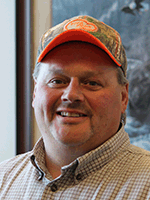
Regional Report: Minnesota – Greg Wiener, Vita Plus
 By Greg Wiener, Vita Plus dairy specialist
By Greg Wiener, Vita Plus dairy specialistIn most of our western region, I am seeing many challenges with calf raising this fall. We have seen terrible swings in weather. We have gone from hot, dry weather to extremely wet weather, and then very cool, wet weather, and then hot, wet weather. Many of the challenges are in calves less than two weeks of age, and we see issues in any and all housing systems. It does not seem to matter if they are group housed on autofeeders, in individual stalls in calf barns or hutches.
That said, all calves are susceptible to some type of challenge and most of those diseases just need some type of stressor to make them flair up. Again and again, we find most of the challenges calves face revolve around cleanliness. We cannot control the weather, yet we can control the amount of pathogens to which calves are exposed.
As we all know, this begins before the calf is even born. Providing a clean, dry, and stress-free area for the cow or heifer to have her calf is the first step in giving the calf that extra edge to perform to the best of its ability.
Dipping the navel as soon as possible after birth is the second step. Make sure the navel is completely covered in 7-percent-tincture iodine. (Iodine teat dip will not do the job.)
Next, getting 1 gallon of high-quality colostrum into the calf within one hour of birth is crucial to successful calf rearing.
Ensure all equipment is cleaned and sanitized properly. Most household soaps and sanitizers are not adequate to kill the pathogens that bottles, buckets, and esophageal feeders tend to carry on or in them. Bleach will not kill most pathogens.
Remember, a clean maternity area, clean milk, and clean equipment are all items you can control. Do not give pathogens any reason to rear their ugly heads.
| Category: |
Animal health Calf and heifer nutrition Sanitation Starting Strong - Calf Care |

